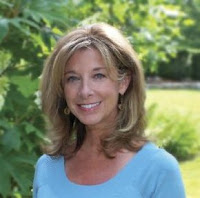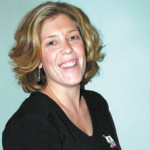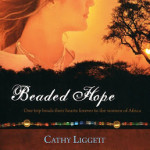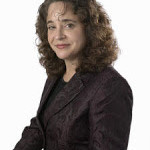My book club selected the novel Beaded Hope for our October selection and we had the pleasure of asking questions of both the author, Cathy Liggett and Jennifer Davis, the founder of the Beaded Hope organisation that inspired the novel. Beaded Hope, by using education and employment, hopes to empower families in South Africa who have been impacted by HIV/AIDS.
Cathy and Jennifer were so generous with their answers, I’ll be sharing our Q&A over a number of posts.
Enjoy part one with Cathy!
Beaded Hope, the novel, shares the journey of four diverse American women who come face to face with poverty, hardship, faith and hope they have never before imagined, when they set foot in the land of South Africa.
**Please note spoilers are present in the following Q&A**
RBC BOOK CLUB: The four characters Heidi, Katie, Cassandra and Gabby … how did you come up with them and their associated stories ?
CATHY: I guess I had in mind that I hoped to reach a broad spectrum of women. So even though the characters weren’t SO far apart in age (well, except for Katie, of course), they were all at different places in their lives and different stages spiritually as well.
Within those different stages, I suppose I hoped to light issues that readers might be able to relate to either from their own personal experiences or from those of a girlfriend or family member.
Recently, I spoke with a book club in South Carolina and one of the ladies said she could definitely relate to Gabby because she also couldn’t have children and she, too, ended up adopting after going on a mission trip. When you’re writing you’re hoping you get the emotions right and don’t want to belittle or over dramatize anything. I certainly hope I did in that case.
But come to think about it as readers, we’re doing the same thing, too, don’t you think? In a way, we sort of fill in the characters we read about by either drawing on firsthand experience or what we imagine someone would feel. Even someone who is a mother can’t totally know what it’s like not to be able to conceive a child…but your heart can imagine it and be sympathetic in turn.
Besides – we’re women! We feel lots of things whether they’re happening to us or not. 🙂
The character of Mama Penny seemed completely larger than life, very charismatic and with the capacity to embrace everyone and their hurts. Have you met the real “Mama Penny” and if you have how did that impact you?
I admit, I totally based the Mama Penny character on the real live (and wonderful) Mama Peggy w ho really is known as the Matriarch of Mamelodi. And, yes, she is larger than life. (If you’d like to see more about her you can visit the Beaded Hope website, www.beadedhope.org and click on “about us.”)
ho really is known as the Matriarch of Mamelodi. And, yes, she is larger than life. (If you’d like to see more about her you can visit the Beaded Hope website, www.beadedhope.org and click on “about us.”)
As I mentioned in the back of the book, besides nurturing her own family and now grandchildren, she is an outstanding part of the Mamelodi community. She is a faith-filled woman who makes things happen. She gets things done. She has her helping hands in everything—hands that never seem to stop moving.
As I wrote too, Mama Peggy and some of the other women we met working at Bophelong Hospice are well-educated women. They could live elsewhere. They could have very well-paying positions doing other things. But their hearts are with the people in the village. They sacrifice prestige and income to be able to help where they feel they are most needed. Going out to the villagers weekly, they counsel about AIDS, comfort the grieving, and bring hope, medicine, and food to the sick. They are incredible, admirable women.
As I read, I wondered if you ever thought of allowing Gabby to adopt Katie’s baby? I did like that she was able to adopt Tumi and Nomvula.
Oh, funny you should ask. For about 2/3 of the book, I thought Gabby was going to adopt Katie’s baby too. J In fact, that’s what I had set in my mind when I first started conceiving the characters. But then, I suppose when I actually got to that point in writing the book, it seemed too pat. Too expected. But even more than that, I also realized the characters wouldn’t grow nearly as much – or gain as much through the strains of their growing – if it all turned out that way. 
A resolve to keep the baby drew Heidi and Katie closer, and though they may still have had some anxiety about how they were going to manage raising the child, and overcoming judgment from others, etc., they found strength in one another and hope and life (after Jeff’s passing) in the unborn infant.
And for Gabby ~ she was so afraid she couldn’t love an adopted child and here she was adopting 2 kids from a different culture, one with HIV and possibly without the aid of her husband since they were at odds. But the maternal tug rose in her so fiercely, she couldn’t deny the feeling and had to respond. She also realized that’s what God had in mind for her all along, so her relationship with Him was mended too.
Plus, I just LOVE writing happy endings!! This seemed like the happiest and most hopeful ending of all for everyone involved, women and children alike.
What was your writing process for this story?
I wish I had more of a process! I always think there should be some magic way of doing this. But I don’t think I’ve found one yet that works for me.
And for this story it was even more jumbled. That’s mostly because I’d written sweet romances before this and so I, of course, thought this story would be a romance too! I started that idea in 2005 when I first met Jennifer. And then later when my crit ique partners thought that didn’t work, the story went from a romance to women’s fiction. This all happened over the span of years since I was working on different proposals – so talk about NO PROCESS!
ique partners thought that didn’t work, the story went from a romance to women’s fiction. This all happened over the span of years since I was working on different proposals – so talk about NO PROCESS!
Once it was decidedly a women’s fiction book in my mind though, I settled on the main characters and their plights ~ where they were in their walk in life and in their spiritual walk too.
But, honestly, I think that’s as much as a process as I had. Of course I had to write a synopsis too for the proposal, but those are more general so not always terribly specific.
Basically, what it comes down to is that I’m not a very good plotter. I tend to come up with characters first. And this was very new to me, keeping so many characters straight and intertwining them. I wish I had a better answer to give. I made charts and lists and kept notes and tried to see where it all “might be going” on a big bulletin board. That helped. But often, for me, I can only see where a story’s going when I’m in the process of writing.
Did Jennifer read the manuscript to help authenticate the story?
I had given Jennifer the initial proposal that I’d written but that only included a prologue set in South Africa (the other chapters were set in America). I had written that prologue based on stories and photos she’d shared with me from her mission trip and from her inspiring experiences in starting the Beaded Hope organization.
When she called years later with an invitation to actually go to South Africa she urged, ‘if you can write that prologue from what I t old you, just think what you could write after seeing things firsthand’. Or rather she didn’t urge – she bribed. J
old you, just think what you could write after seeing things firsthand’. Or rather she didn’t urge – she bribed. J
Once I got the characters to the point where they were in SA, I definitely relied on Jennifer’s experiences and knowledge for facts and nuances of the culture, wanting to make certain I was relaying it correctly. Or – if Jennifer didn’t have the answer about something I was writing about, she’d contact Mama Peggy or the real live Mighty and get the answer from them.
Also you’ll note – the finished Beaded Hope book has no prologue. That idea got canned, and I think it was a really good change.
What do you think are some of the greatest differences between women in Western nations and the African women depicted in your story?
It’s hard for me to make a generalization about most women in Western nations because I’m only one of them ~ and I don’t have any statistics. So using me as an example, I have so m any more resources at my disposal. My life is like heaven on earth compared to those ladies. But funny thing is when I went to SA, I thought I’d be ministering to the women there. That, however, didn’t happen much. Instead more than anything, they ministered to me. Their faith is so demonstrative and off the charts despite all they go through. It impressed me completely and obviously in the character Jaleela, I tried to embody all the great qualities I discovered in the ladies of SA – courage, strength, warmth and unwavering faith.
any more resources at my disposal. My life is like heaven on earth compared to those ladies. But funny thing is when I went to SA, I thought I’d be ministering to the women there. That, however, didn’t happen much. Instead more than anything, they ministered to me. Their faith is so demonstrative and off the charts despite all they go through. It impressed me completely and obviously in the character Jaleela, I tried to embody all the great qualities I discovered in the ladies of SA – courage, strength, warmth and unwavering faith.
What are the similarities?
Despite the cultural differences and the deplorable conditions these ladies fight to survive each day of their lives, at heart we are all women who have the same hopes and dreams – we want a community and a world that’s a safe, hopeful place where our children and grandchildren can make their own dreams come true.
How has writing ‘Beaded Hope’ impacted on you, personally?
I’ve grown so much from the time this Beaded Hope journey began 5 years ago. Actually, when I think about it, I’ve grown in much of the same ways some of my characters have in the researching, writing, and publishing of Beaded Hope.
Just like my characters Gabby, Cassandra and Heidi, I’ve learned…
~ (as I just mentioned) that women half-way around the world, living in the most deplorable conditions, still have the same desires at heart that I do – happy , well-fed children who know God and are hopeful with dreams for their futures.
, well-fed children who know God and are hopeful with dreams for their futures.
~ that often when you think you’ve been sent some place to minister to others, don’t be surprised when you are the one who is ministered to.
~ that God’s timing really is worth waiting for!
~ and that no matter how little our knowledge, no matter how imperfect our hearts, God continues to pursue us to join Him in His work, just because He loves us so.













October 28, 2010 at 6:11 pm
GREAT Interview Rel. Thanks for bring this book to my attention. Sounds good!!
Nora
The Book Club Network
October 30, 2010 at 3:56 pm
This definitely looks like a must read.